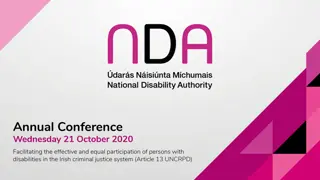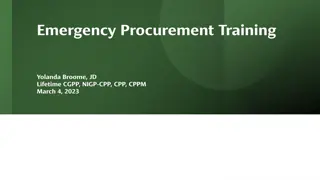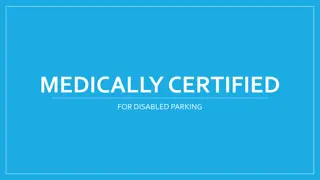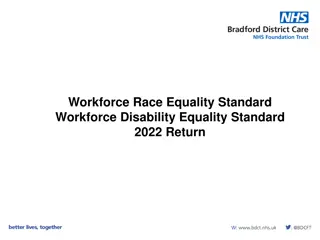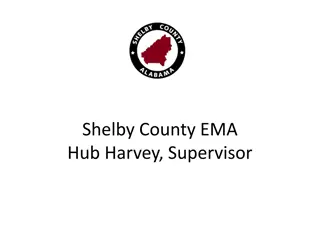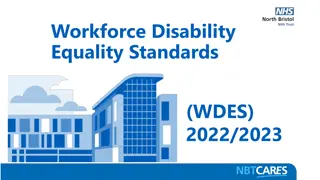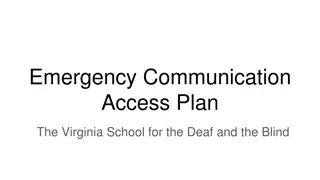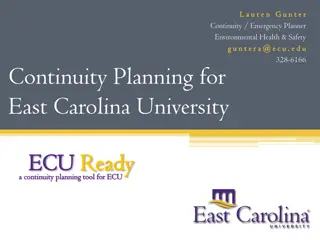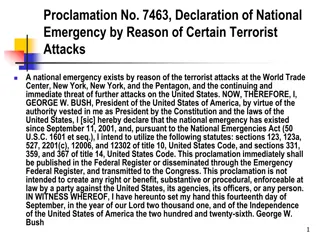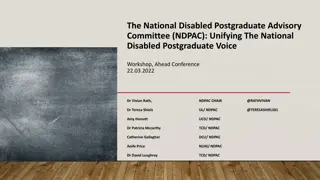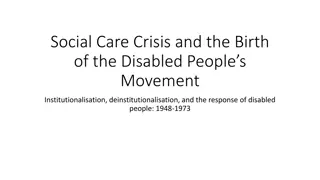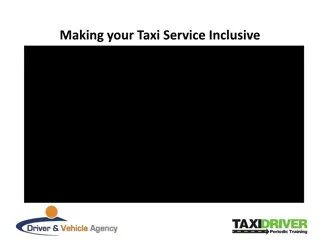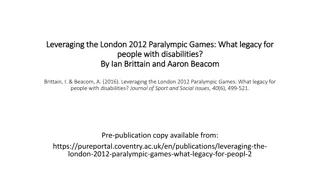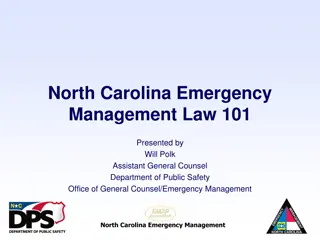Planning for Disabled Access and Functional Needs in Emergency Situations
Explore essential planning considerations for accommodating individuals with disabilities and functional needs during emergency situations. Learn about structural and procedural considerations, key takeaways, and helpful resources to ensure inclusive preparedness. Address physical mobility challenges, communication barriers, and facility accessibility to safeguard the well-being of all community members.
Download Presentation

Please find below an Image/Link to download the presentation.
The content on the website is provided AS IS for your information and personal use only. It may not be sold, licensed, or shared on other websites without obtaining consent from the author.If you encounter any issues during the download, it is possible that the publisher has removed the file from their server.
You are allowed to download the files provided on this website for personal or commercial use, subject to the condition that they are used lawfully. All files are the property of their respective owners.
The content on the website is provided AS IS for your information and personal use only. It may not be sold, licensed, or shared on other websites without obtaining consent from the author.
E N D
Presentation Transcript
Planning for Disabled Access and Functional Needs Students Presenter Date Conference/Meeting Name
Presentation Overview Today s Agenda So What? Planning considerations. Structural or facility considerations. Procedural considerations. Key takeaways. Helpful links. 2
So What? Why plan for disabled people specifically? People with disabilities, access or functional needs are disproportionally affected during an emergency or disaster. Organizations from FEMA to the UN have all recognized the need to address the evacuation and care of disabled persons during a disaster. 3
So What? (What it looks like) FEMA Video on planning for people with disabilities. 4
Planning Considerations Planning to protect and mitigate hardship for people with disabilities There are two aspects which should be considered: Physical mobility (think, facility access). Procedural challenges: acting on the plan. Communication challenges can affect people who are blind or deaf as well as those who don t speak the dominant language. Have a plan in place that ensures all people within your school will not only be notified of an emergency, but know what to do and be able to do it. Don t plan in a vacuum. Include the people you are planning for in your planning process. 5
Structural or Facility Considerations Think access and ease of maneuver Dependent on what disabilities are present in your staff and student body: Do all exits allow ease of access and egress for your maneuver challenged individuals? If alternate access points must be used by disabled persons, do you have a plan in place to help them navigate difficult exits? Do you have lighting, signage and auditory notifications available in your building(s)? *Not a comprehensive list. 6
Procedural Considerations Communicating and responding to an emergency How are people in your building(s) notified of an emergency or drill? Can all people in your building(s), in all locations, evacuate, shelter in place or hide during an emergency? If an assistant is needed for a disabled person in your population, does that person know how to act during all emergency response types? Do you have backups in place? 7
Key Take-aways Planning musts! Know who you have and how you are going to protect those people from harm and mitigate any undue suffering during an emergency response. Just like your fire evacuation routes, don t have just one response. Include alternates. Remember to consider If you don t know: ask! Ask the disabled person how you can plan for them or ask their primary caregiver how you can plan for them. 8
Helpful Links: Planning Resources Helpful Links to Helpful Places Executive Order 13347 established the need to consider and include people with disabilities, access and functional needs into emergency planning. You can find that order here: https://www.govinfo.gov/content/pkg/FR-2004-07-26/pdf/04- 17150.pdf FEMA training on planning for people with disabilities and others with access and functional needs: https://training.fema.gov/is/courseoverview.aspx?code=IS-368 10



